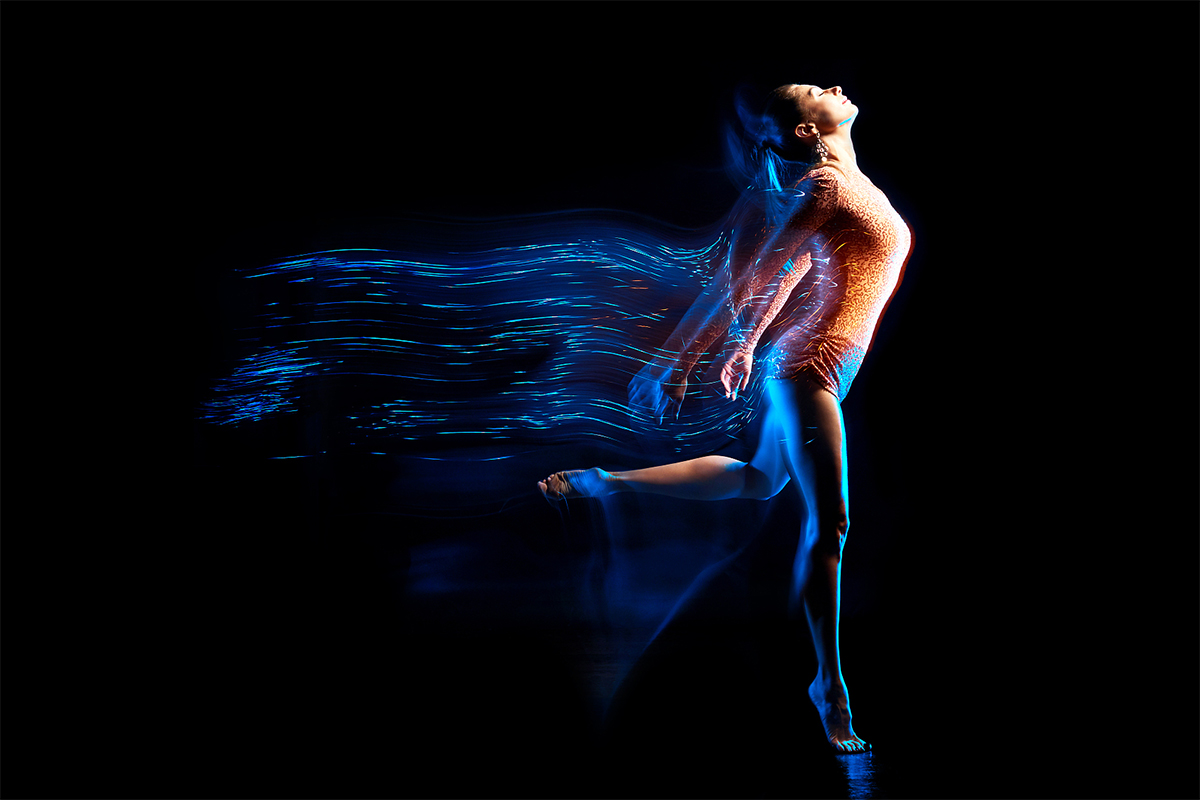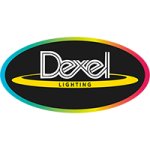Video lighting
Video lighting equipment consists of tools and devices designed to illuminate scenes for video production. The effective use of lighting contributes to the creation of compelling video content. Video lighting serves a multifaceted role in the creation of compelling and professional video content in various settings, including film production, television broadcasting, online content creation, corporate videos and presentations, documentary filmmaking, photography and cinematography studios, live events and performances, and more. The primary purpose of video lighting is to illuminate subjects, ensuring that they are well-lit and visible on camera. Proper illumination allows the audience to see details, facial expressions, and actions clearly, contributing to a visually engaging and informative viewing experience. Beyond just illuminating the scene, lighting serves as a powerful tool for storytelling, setting the mood, guiding attention, and enhancing the overall visual experience for the audience. Content creators who understand and master the art of lighting are better equipped to produce videos that are not only technically proficient but also emotionally resonant and visually captivating.
Video lighting serves a multifaceted role
Video lighting serves multiple essential functions in the production of high-quality video content. It allows the audience to see details, facial expressions, and actions clearly, contributing to a visually engaging and informative viewing experience. Viewers are more likely to be engaged and captivated by videos that are visually appealing. Effective lighting contributes to a polished and professional appearance, establishing a positive first impression. Video lighting influences the mood and atmosphere of a scene. Different lighting setups can create varying emotional tones. The choice of lighting contributes to the overall feel of the video, whether it's a bright and cheerful atmosphere, a moody and dramatic setting, or something in between. Video lighting directs the viewer's attention to specific elements within the frame. Effective lighting allows content creators to control the visual hierarchy in a scene. By strategically highlighting key elements, videographers can guide the viewer's focus and emphasize critical aspects of the narrative or message. Video lighting works to add dimension and depth to the visuals. It creates shadows and highlights that give a three-dimensional quality to the subjects within the frame. The sense of depth enhances the realism of the video, making it more immersive for the viewer. It also contributes to the overall cinematic quality of the footage. The effective use of lighting can convey time of day, location, and character emotions. It helps tell the story visually. Consistent lighting throughout a video contributes to visual cohesion. It avoids jarring transitions between shots and scenes. Visual consistency creates a seamless viewing experience. Viewers are less likely to be pulled out of the narrative by abrupt changes in lighting, allowing them to stay immersed in the story. Lighting techniques, such as the use of cinematic lighting setups, contribute to achieving a professional and cinematic look in videos. A cinematic look enhances the overall production value of the video, making it more visually compelling and aesthetically pleasing.
Video lighting for film production
Video lighting equipment is extensively used in film production to illuminate scenes, actors, and sets. It plays a crucial role in achieving the desired visual aesthetics and storytelling elements in films. They not only ensure that scenes are adequately illuminated but also contribute significantly to the overall aesthetics and emotional impact of the film. Film lighting equipment needs to support dynamic scenes and the storytelling process. Lighting setups should adapt to changes in mood, atmosphere, and narrative elements throughout a film, creating visual continuity while responding to the evolving story. Maintaining visual continuity is critical, and filmmakers need to ensure that lighting remains consistent to avoid jarring transitions between shots. Filmmakers use lighting to evoke specific emotions, convey tension, or create a particular ambiance, requiring thoughtful planning and execution. Lighting must enhance facial features and expressions while maintaining a natural and flattering look, requiring precision and attention to detail. Video lighting for film production involves a combination of technical expertise, creative choices, and collaboration to illuminate scenes effectively and contribute to the storytelling and visual impact of the film. The classic film lighting technique involves three primary light sources: key light, fill light, and backlight. The key light is the primary illumination for the subject, the fill light reduces shadows, and the backlight separates the subject from the background, adding depth.
Video lighting for television broadcasting
Television studios heavily rely on video lighting equipment for live broadcasts, news programs, talk shows, and scripted content. Lighting in television ensures that on-air talent is well-lit and visible to the audience. One of the primary functions of video lighting in television is to ensure that on-air talent is well-lit and visible to the audience. Adequate lighting allows the camera to capture the facial expressions, gestures, and body language of the presenters, actors, or hosts, making their performances clear and engaging. Lighting is crucial for maintaining consistent image quality across different shots and scenes. Properly lit environments contribute to a professional and polished look, enhancing the overall production value of the content. This consistency is particularly important in live broadcasts and talk shows where there may be multiple camera angles and quick transitions between shots. Video lighting is used to create specific moods and atmospheres that complement the tone of the content. Whether it's a serious news segment, a lively talk show, or a dramatic scripted scene, lighting can be adjusted to evoke the desired emotional response from the audience. Television sets are designed with careful consideration of lighting requirements. Properly lit sets help highlight the key elements of the environment, ensuring that the background complements the overall visual composition. Television studios produce a wide range of content, from news programs to entertainment shows and dramas. Video lighting equipment needs to be versatile enough to adapt to the specific requirements of each genre, whether it's the bright and evenly lit environment of a news studio or the more dramatic and controlled lighting of a scripted scene.
Video lighting for online content creation
Video lighting equipment is widely used in online content creation, including content for platforms like YouTube, Vimeo, and social media. Content creators use lighting to enhance the visual quality of their videos. Online content creators rely on effective lighting to produce videos that are visually engaging, aesthetically pleasing, and capable of holding the attention of online audiences. It contributes to creating a professional and polished look for various types of online content, such as tutorials, vlogs, and short films. Different platforms may have varying video formats and requirements, but the need for good lighting remains consistent. Lighting equipment helps content creators overcome challenges such as low light conditions, unflattering shadows, or inconsistent lighting. Video lighting improves clarity, reduces shadows, enhances colors, and contributes to an overall professional look. Adequate lighting ensures that subjects are well-lit, making them clearly visible to the audience. Quality lighting can positively influence how viewers perceive the content and the creator. Creators can experiment with different lighting setups to achieve specific looks, effects, or creative expressions. Portable and adjustable lighting solutions offer flexibility for shooting in various locations and conditions. The use of video lighting equipment is integral to online content creation, offering content creators the means to enhance visual quality, address technical challenges, and express their creativity across various platforms.
Distinctive video lighting requirements
Video lighting has distinctive requirements compared to other lighting scenarios due to the specific demands. TV broadcasts and professional video production often utilize high-definition (HD) or even 4K resolution. This level of detail means that lighting imperfections and inconsistencies are more noticeable. Traditional lighting, especially older fluorescent lights, may produce flickering that is imperceptible to the naked eye but can cause issues when recorded on video. TV broadcasting lighting must be designed to be flicker-free to avoid interference with the broadcast signal and ensure a smooth viewing experience. Video lighting must be carefully controlled to avoid overexposure or underexposure, as extreme variations in brightness can result in loss of detail in the image. Broadcast cameras are highly sensitive to changes in lighting conditions. Broadcasting studios are often designed with multiple sets, and lighting setups must be adaptable to different configurations. Lighting professionals need to consider the versatility of their setups to accommodate various scenes and programs without compromising visual quality. Video content is viewed on a variety of screens, from large high-definition TVs to smaller devices like tablets and smartphones. Lighting setups should be designed to ensure that the visual quality remains consistent across different display types and sizes. Maintaining consistent
color temperature is vital in TV broadcasting. Mismatched color temperatures can result in unnatural-looking skin tones and overall
color reproduction.
Lighting fixtures are carefully chosen and calibrated to provide a consistent color temperature throughout the production. Video lighting involves accurately reproducing colors to ensure that the recorded or captured colors closely match the true colors of the subjects or scenes being illuminated. Achieving accurate and faithful color representation is essential for maintaining visual integrity in video content. Television Lighting Consistency Index (TLCI) serves as a standardized metric that quantifies the accuracy and precision of color reproduction in video lighting.
Diversified video lighting requirements
The lighting needs and considerations in video production can vary depending on the specific context or purpose of the video. Narrative films often have scenes with varying moods and atmospheres, from intense action sequences to quiet emotional moments. Dynamic lighting setups may be required to create cinematic effects, such as high contrast for dramatic scenes or soft, diffused light for intimate moments. Dynamic lighting setups may be required to create cinematic effects, such as high contrast for dramatic scenes or soft, diffused light for intimate moments. A dramatic feature film may require complex and carefully orchestrated lighting setups to create mood and atmosphere, while a corporate interview video might prioritize even, flattering lighting to present the subjects in a professional manner. Interviews and documentaries aim for authenticity and often involve capturing real-life situations, which requires the use of natural and flattering lighting to represent subjects realistically without overly stylized effects. Commercials often focus on showcasing products or services with a polished and vibrant look. Bright, evenly distributed light is used to highlight details and create an appealing visual aesthetic. Live broadcasts require consistent and reliable lighting for clear visibility. Balanced, glare-free lighting is applied to ensure the presenter is well-lit without distracting shadows or reflections. Music videos often involve creative and artistic visuals that complement the music. Bold and experimental lighting effects are implemented to match the artistic vision of the music video.
LED video lighting
The unique features of
LED lighting have become integral to modern video production, offering benefits in terms of energy efficiency, longevity, light quality, optical control, lighting control, and creative possibilities. The energy efficiency of LEDs significantly reduces power consumption, making them cost-effective for extended periods of use. The durability and reliability of
LED video lights contribute to a reduction in maintenance costs and ensure consistent performance throughout the lifespan of a video production setup. The compact design of LED video lights enhances portability, enabling videographers and cinematographers to easily transport and set up lighting equipment in diverse locations. This adaptability aligns with the demand for flexibility in modern video production. The modular design of LED video lights allows to customize setups based on specific requirements. This adaptability is crucial for tailoring lighting to the unique needs of different video projects and adapting to various shooting conditions. LED video lights provide instant illumination without the need for warm-up time. Flicker-free operation can be achieved for video recording to avoid visual disturbances, ensuring smooth and consistent lighting during shoots. The spectral controllability of LED technology allow for the adjustment of color temperature and optimized color rendering performance. The dimmability of LED lights allow for the adjustment of the intensity, color temperature, and
RGB color mixing. LED video lights come with built-in features or programmable settings open up opportunities for cinematographers to experiment with unique visual styles and enhance storytelling through lighting. LED video lights easily integrate with modern technology, allowing for features such as remote control systems, wireless communication, and connectivity with smart devices. This integration streamlines control processes and enhances efficiency on video sets.
Types of LED video lights
Video lighting equipment comes in various types, each serving specific purposes to achieve desired lighting effects in video production. LED panel lights in video production serve a wide range of purposes, including illuminating subjects, controlling shadows, providing color temperature flexibility, and contributing to the overall visual quality of the content. LED spotlights and
Fresnel lights are valuable tools in video production for achieving specific lighting effects, controlling the direction of light, and providing soft and even illumination on subjects. Filmmakers often use these lights strategically to enhance the visual quality and storytelling aspects of their productions.
LED ring lights are valuable tools in video production for achieving even and soft illumination, reducing shadows, creating catchlights, and enhancing the overall visual quality of the footage. Their portability makes them convenient for on-location shoots, vlogging, and scenarios where quick and flexible lighting adjustments are necessary. On-camera LED lights provide immediate, portable illumination for run-and-gun shooting or situations where minimal equipment is preferred. Bicolor LED lights, which can produce both warm (tungsten) and cool (daylight) color temperature, provide flexibility in adapting to changing lighting conditions during a shoot.
Tunable white LED lights allow filmmakers to seamlessly shift between warm (tungsten) and cool (daylight) color temperatures to match the ambient light conditions or create specific moods for different scenes. RGB LED lights are used in video production for their ability to produce a wide spectrum of colors, providing filmmakers with creative control over lighting effects and atmospheres.

















































